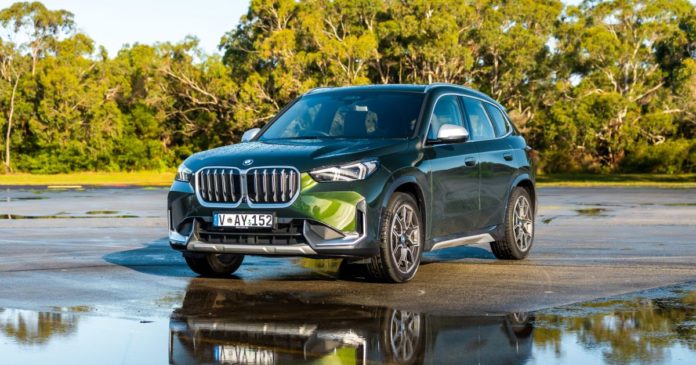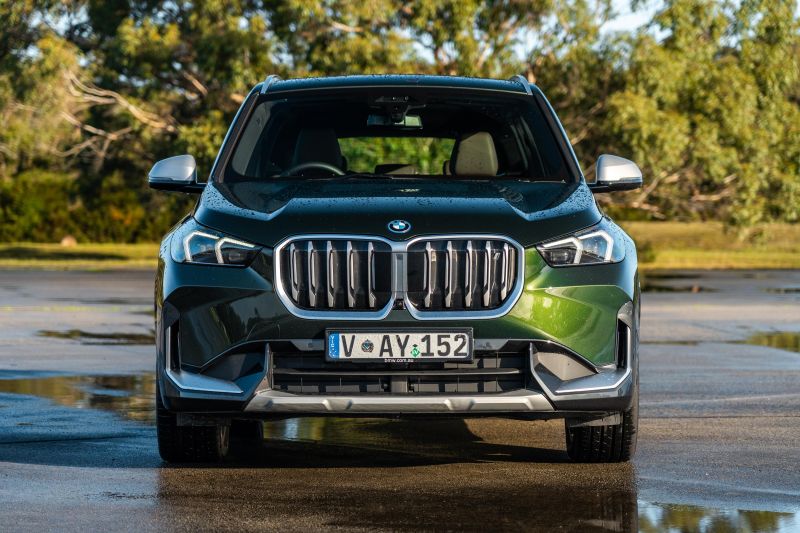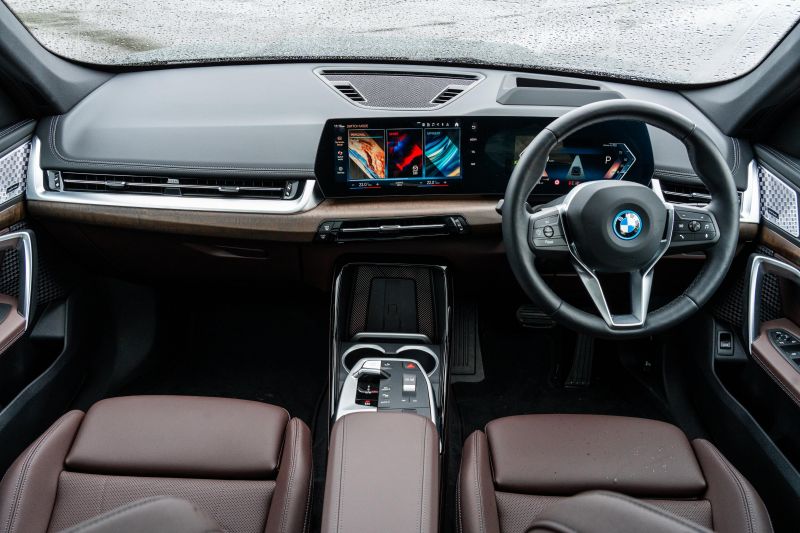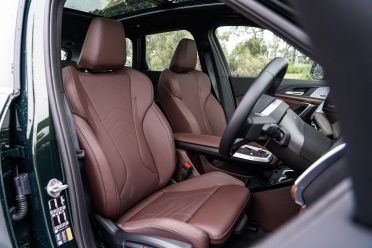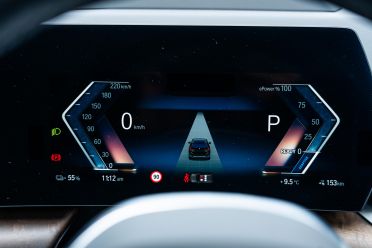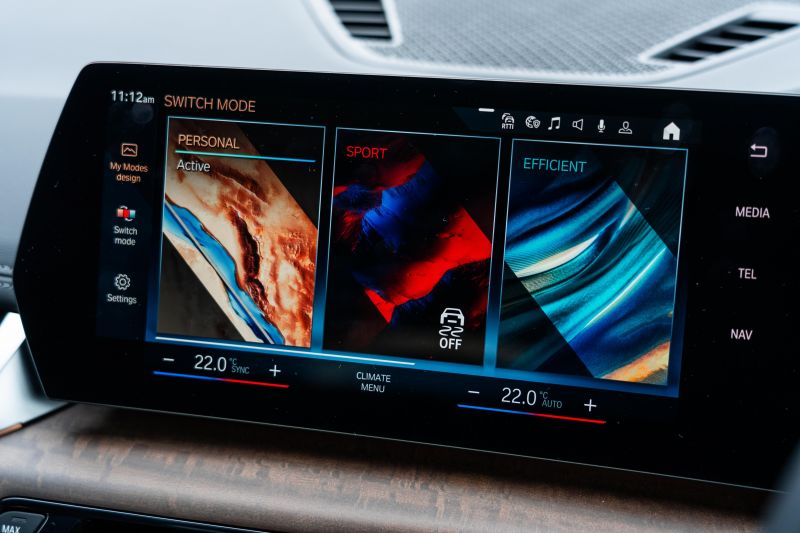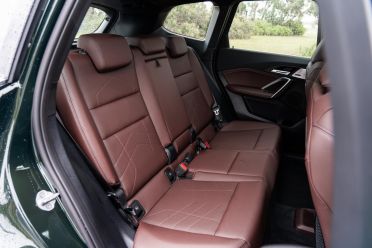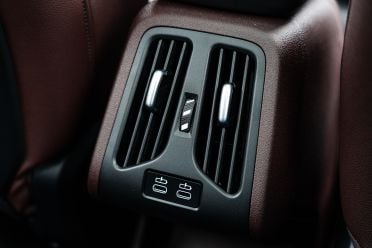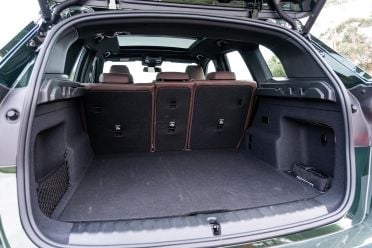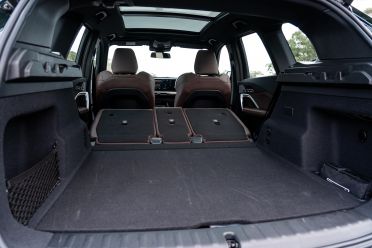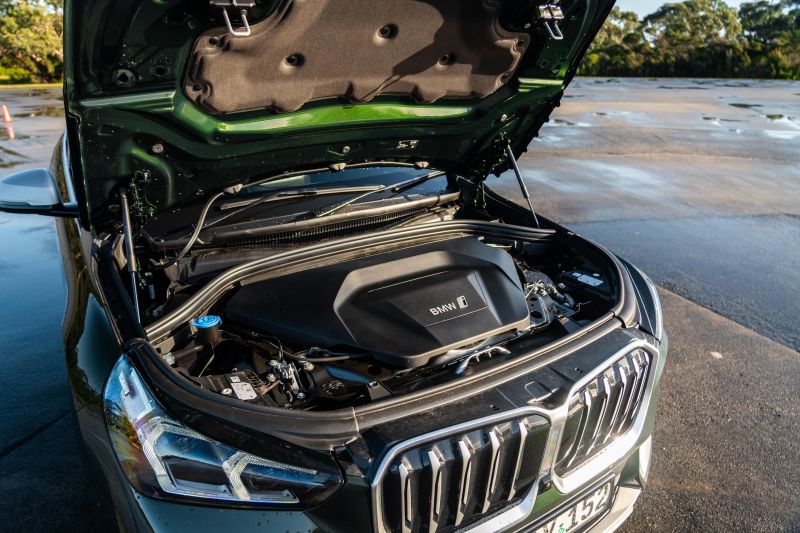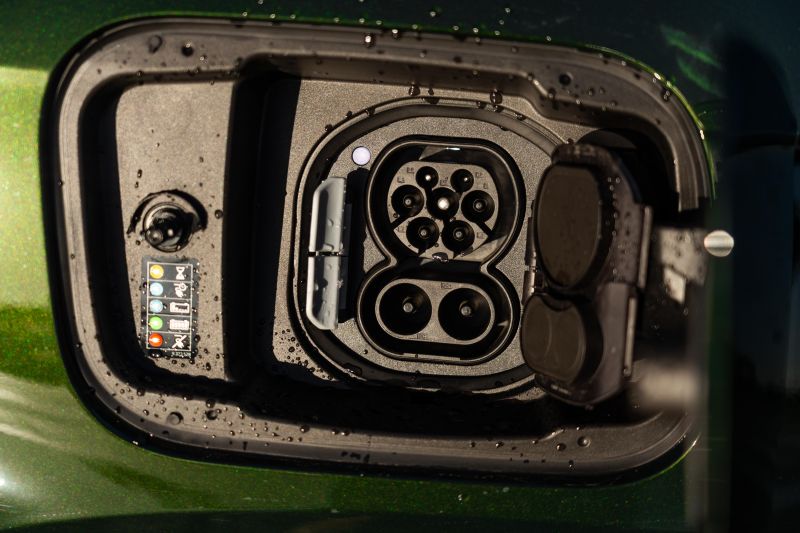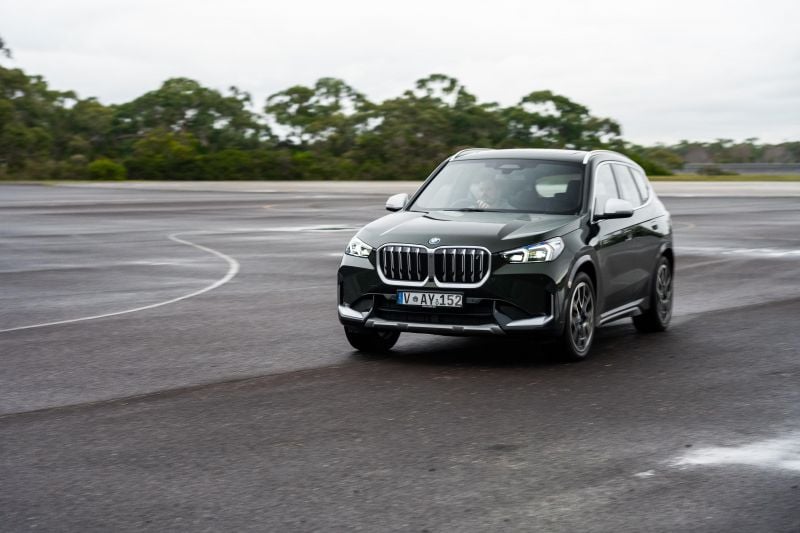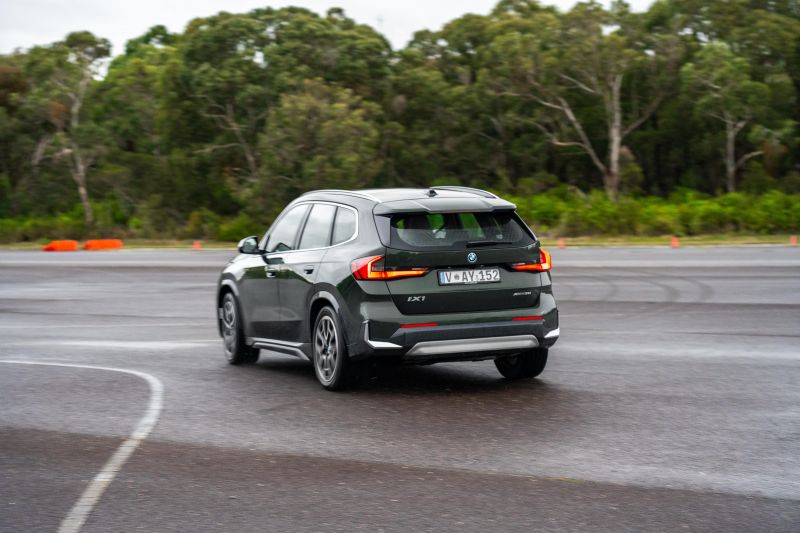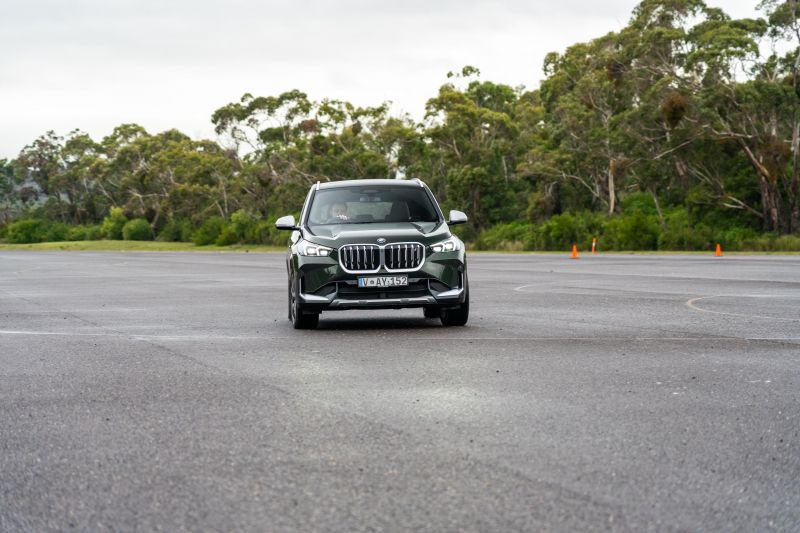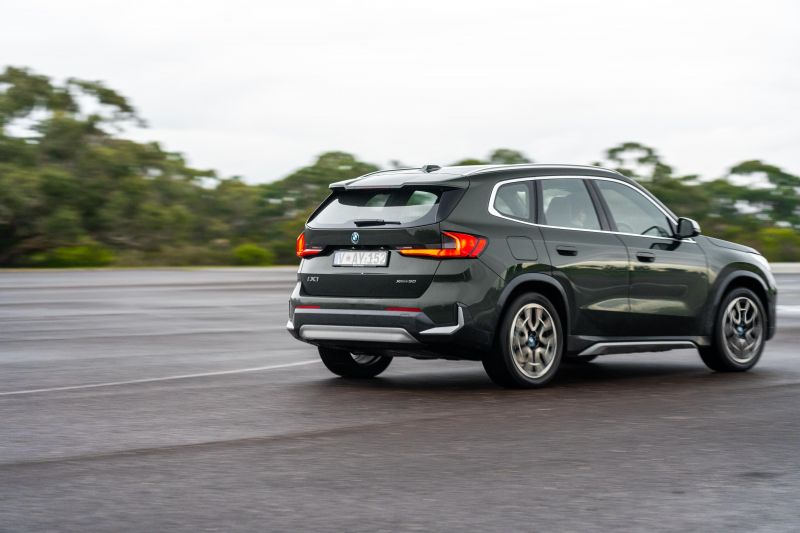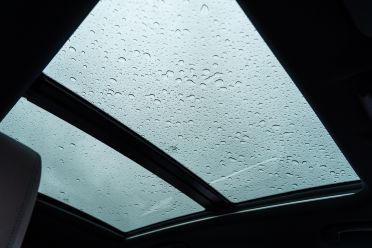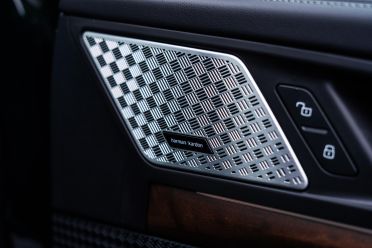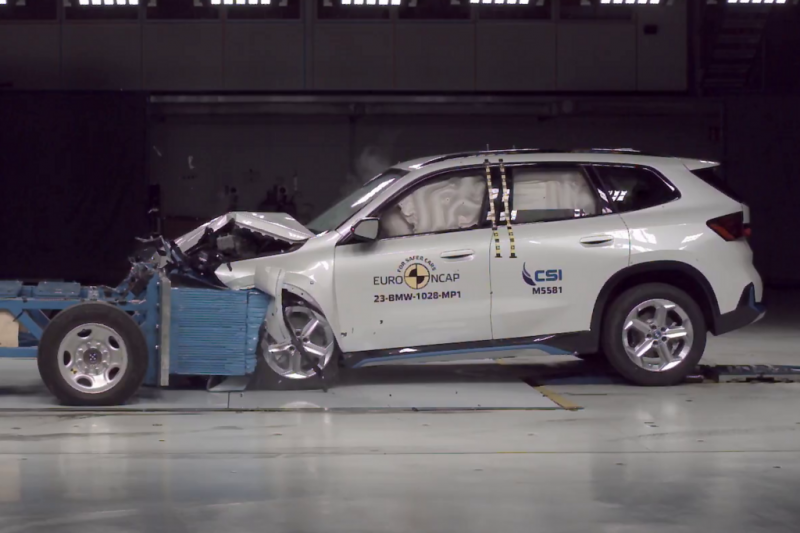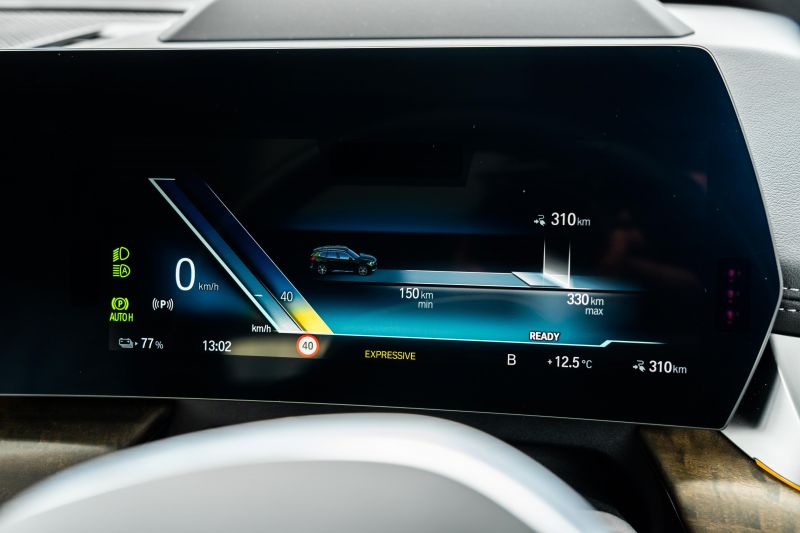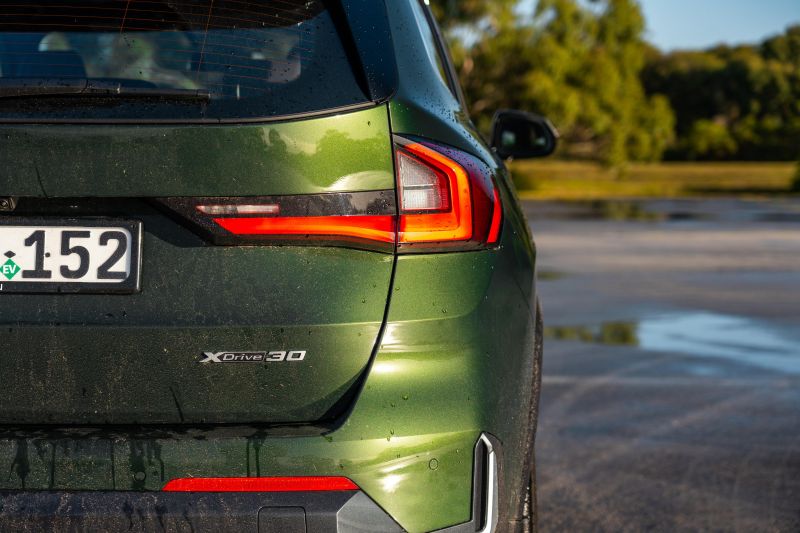Sometimes you get into a new car not expecting it to make much of an impression – that’s how I felt about the BMW iX1.
After all, the previous-generation X1 wasn’t a particularly memorable small SUV. This new electric version of the third-gen X1 is also an electric vehicle (EV) based on a combustion vehicle platform, and conventional wisdom says that brings inherent compromises.
After a week with the iX1, however, I was left with the impression this is a smartly packaged, sharply styled electric SUV – albeit a pricey one – that deserves to be on your shopping list.
How does the BMW X1 fare vs its competitors?
View a detailed breakdown of the BMW X1 against similarly sized vehicles.
BMW
X1
How much does the BMW iX1 cost?
BMW launched the iX1 in Australia in dual-motor all-wheel drive xDrive30 guise, with a more affordable front-wheel drive eDrive20 due to arrive here in the first quarter of 2024.
The company offers the xDrive30 in either xLine or M Sport guise, priced identically at $84,900 before on-road costs – $6000 more than the entry-level eDrive20.
As the name suggests, the M Sport has a sportier look, and also features unique front and rear bumpers and less in the way of chrome. The xLine, as featured here, has a pearl chrome grille, aluminium-finish roof rails and window sills, and a glacier silver finish for the mirror covers.
The iX1 isn’t cheap. The elephant in the room is the top-selling Tesla Model Y, which is positively elephantine in comparison to the more compact BMW and is available in Long Range all-wheel drive guise for just $78,400 before on-road costs.
The BMW does undercut an all-wheel drive Genesis GV60 or Mercedes-Benz EQA 350 by a significant margin, and the Volvo XC40 Recharge Twin Pure Electric by around $1000.
It’s priced similarly to the top-spec Lexus UX300e, although its Japanese rival is front-wheel drive-only.
What is the BMW iX1 like on the inside?
This might be one of BMW’s more affordable cars, but it feels like a BMW inside.
Australian BMW buyers seem to have a strong predilection for models equipped with the M Sport package – I’d argue they don’t know what they’re missing out on.
With Eucalyptus open-pore wood trim and Mocha leather upholstery, the iX1’s interior is at once warm, inviting and upscale. Note that a running change has seen the natural leather trim subbed out for ‘Veganza’ leatherette upholstery in the name of sustainability, though the colour options remain the same.
Material quality is superb. The metal-look trim actually looks like metal, the Harman Kardon speaker grilles are elegant, and that wood trim is divine.
The dashboard is wrapped in leatherette with prominent stitching details. Colour-adjustable ambient lighting further elevates the, well, ambience, and you grip a chunky, tactile, leather-wrapped steering wheel with rake and reach adjustment. The iX1’s switchgear is mostly tactile, too.
As with many luxury-brand cars under $100,000, there are some hard plastics but these are confined to the lowest reaches of the dash and front doors, while the rear door tops are also hard to the touch.
The design of the centre console means that, although there’s hard plastic here, you won’t find yourself hitting your knee against it. BMW has banished the iDrive controller from its new generation of small cars, which is a shame, but this has freed up space on the centre console.
This takes on a different shape in the X1 and iX1. There’s a ‘peninsula’ of sorts, sitting ever so slightly below armrest height, which features the stubby gear shifter, park brake, drive mode selector, volume and skip track controls, and camera, auto hold and hazard light switches.
There’s technically a storage cavity under the softly padded armrest, but it’s fairly useless as it won’t fit some of today’s larger phones. A second level of the centre console sits scarcely above floor height, and contains the cupholders and two USB-C outlets plus an expansive storage shelf.
A vertically mounted wireless phone charger is slanted back, an increasingly common design choice that is vastly more desirable than some chargers where your phone disappears into a nook. Fortunately, it actually seems to work reliably, not something that can be said for all wireless chargers in my experience.
This different take on a centre console has resulted in a more open feeling cabin, without the type of bulky, high centre console that’s quite common nowadays.
The seats seem to envelop you, and they’re extremely comfortable. There’s heating (albeit disappointingly no ventilation); a massage function for the seatback, with different modes and levels of intensity, which stays on for 20 minutes; and there are also thigh extenders you can manually pull out for greater support.
To turn on those heated seats, you need to go into a touchscreen menu; the climate controls always appear on the bottom of the screen, but the seat controls don’t. You can use voice prompts, and these work quite well. Even asking the voice assistant to add another stop to our route didn’t confuse it, though as with most systems you’ll need to do one prompt at a time.
While we must gripe about the loss of physical switchgear, the interfaces in this car are superb.
Take the digital instrument cluster, for example. There are multiple layouts you can select from, including a more conventional gauge setup. You can also have Google Maps projected onto the cluster.
The head-up display is neatly presented with the type of information you want to easily see, including turn-by-turn directions for navigation – even if you’re using Google Maps.
Then there’s the infotainment system. We may moan that you have to use it to control some functions that would be best controlled via conventional switchgear, but the system itself is excellent.
You can add widgets to the home screen, or otherwise swipe across to access the screens for traffic, navigation, weather, phone and other functions; touch-capacitive shortcut buttons also sit next to the screen itself.
Open the apps menu and it’s quite daunting at first, with so many different functions available. You can filter this by vehicle or infotainment, however.
There’s a dropdown menu accessible at all times with functions like do not disturb and a shortcut to live vehicle information. You can also easily navigate back to smartphone mirroring by pressing within the header bar.
While it’s tempting to just use the navigation apps in Apple CarPlay or Android Auto, the factory navigation is exceptionally slick. It can be a bit slow to recalculate when you miss a stop, but its augmented reality function displays a camera view of the road ahead with arrows superimposed on top of it. You won’t be missing your turnoff if you use this!
We did use Android Auto, and found the wireless connection was established quickly and reliably stayed on with one exception: the overhead structures for toll pass readers would create interference if you lingered under them for too long.
Our gripes with the iX1’s interior are minor. The front cupholders lack teeth and struggle to keep your drink secure. The plastic switchgear on the steering wheel is fairly tactile, but it’s a bit odd the distance control for the adaptive cruise isn’t among the buttons on the tiller.
The list of pros in the iX1’s interior far, far outweighs the list of cons. The doors close with a solid thunk, while the optional Harman Kardon sound system is superb, as is the resolution of BMW’s cameras.
You can set the car’s Comfort Access system to unlock the vehicle when you approach it with the key and lock it when you walk away or, as I did, turn these features off. The windscreen wiper stalk has a light on it to indicate when it’s in Auto (i.e. rain-sensing) mode. It’s a simple detail, but one not every brand employs.
The ability to toggle the ambient lighting to change for things like incoming calls and safety warnings is also neat.
Step into the back, and you’ll find a decent amount of space for a small SUV. At 180cm tall, I was able to sit comfortably behind my own seating position, with ample headroom despite the presence of a panoramic sunroof. There’s also a fairly flat floor back here.
There are air vents for rear-seat occupants, plus two USB-C outlets. There are ISOFIX anchor points for the two outboard seats, plus a top-tether point for all three seats.
Boot space is listed as 490 litres, only 10 litres lower than that of the much bigger BMW iX although down 50L on petrol-powered X1 models.
There’s a 12V outlet back here, plus netted storage nooks. You can expand the load space by dropping the rear seats, which fold 40:20:40.
What’s under the bonnet?
The iX1 features a dual-motor all-wheel drive powertrain, though a single-motor front-wheel drive setup is available in the eDrive20.
Up to 230kW in combined power is available, with 494Nm on tap from the moment you press the throttle pedal. BMW claims a 5.6-second dash from 0-100km/h.
The iX1 is fitted with a 67kWh (64.7kWh usable) lithium-ion battery pack, quoting 400km of range on the ADR cycle, which is based on more lenient NEDC regime.
It’s equivalent to a claimed 18.3kWh/100km on the combined cycle. Globally, BMW quotes up to 440km on the WLTP cycle depending on specification. That’s down quite a bit on the Model Y Long Range AWD, which boasts 533km of WLTP range, or an XC40 Recharge Twin which has 500km.
As for charging, the iX1 can be hooked up to a DC charger at up to 130kW, which will see the battery replenished from 10 to 80 per cent in as little as 29 minutes.
BMW has also opted for the 22kW on-board AC charger as standard. It means you can use the full capability of the available 22kW AC wall box accessory offered by BMW Australia.
Mode 2 and Mode 3 cables are included at purchase, and BMW also throws in a complimentary three-year subscription to the Chargefox public charger network.
In highway commuting, we saw anywhere between 13.7kWh and 16.2kWh per 100km. Over the course of our week with it, average energy consumption was 18.7kWh per 100km. One gripe about charging the iX1: the charge door is overly large and swings out.
How does the BMW iX1 drive?
Perhaps it’s the combination of somewhat touchy acceleration and quick steering, but the iX1 has a fun, scrappy feel to it.
It’s one thing to just be quick off the line, as most EVs can boast that kind of instantaneous torque.
The iX1 is enjoyable in more than just the 0-100km/h sprint, though. It feels light on its feet, lacking the leaden, bottom-heavy feel of some EVs.
The steering is nicely weighted though there’s not an abundance of feedback here; it feels better in Sport mode, though more feedback from the road would be welcome.
Though the iX1 is quick off the line, it never loses traction and we never experienced any wheelspin or tyre squeal. It does make me wonder, however, if we’ll be able to say the same about the eDrive20 which doesn’t feature all-wheel drive.
On a spirited drive in the twisties, the iX1 holds its line nicely around the corners with plenty of grip. Pop it into Sport and not only does the steering get a little bit more weight, but all the screens get a splash of red and the BMW Iconic Sounds ‘engine noise’ changes.
Indeed, the Hans Zimmer-composed score is different for each drive mode. Expressive is the strangest, as it promises ‘comfort-oriented driving’ and turns on the massaging seats and amps up the ambient lighting, but plays the most unusual and, indeed, the most recognisably Hans Zimmer composition of all the modes.
It sounds almost like horns in the distance, with the iX1 making noises even if you’re not mashing the throttle. If they make an Interstellar 2, the score might just sound like Expressive mode in an iX1.
There are also Relax and Efficient modes plus in Individual mode, the latter allowing you to customise things like the suspension settings and the responsiveness of the drivetrain.
The iX1’s enjoyable feel hasn’t come at the expense of ride quality. It’s really nicely damped over almost all surfaces, never feeling lumpy. Only if you hit a bunch of expansion joints and ruts in quick succession does it come remotely close to getting unsettled, and even still it maintains its composure.
It’s not quite a magic carpet ride, but the iX1 never feels harsh. Body control is also good; roll is minimal in corners, and you don’t have to wait long for the car to settle when you come over an undulation.
There’s a bit of wind rustle at highway speeds and a little tyre roar, but noise levels are never objectionable. The Steering and Lane Control Assistant, a level 2 autonomous driving system, works well at keeping you centred in your lane without being overly intrusive at all times.
Likewise, the regular lane-keep assist works well without making its presence constantly felt. You can choose between adaptive and regular cruise control, while you can also set an allowance amount for the cruise.
There’s plenty of adjustability for the driver assist systems. You can adjust the level of collision warning sensitivity, for example, and the level of vibration through the steering wheel.
There’s a hill descent control system, as well as a semi-autonomous parking assist function that actually works really well – not all of these systems inspire confidence, after all.
There are still some areas where the iX1 could be improved. The brakes, for example, don’t have a lot of bite.
Even though the screens come on instantly when you step into the iX1, you still have to press a start button to turn the vehicle on – unlike rivals like the Volvo XC40 Recharge. Only a small ‘On’ or ‘Off’ icon in the cluster will clue you in as to whether the vehicle is running.
Drive mode selection is also a bit more cumbersome than expected, as you can’t just rapidly press the modes button to quickly change.
While we’re griping, why is the distance control for the cruise control on the centre console and not the steering wheel?
The one-pedal drive mode is more easily activated than in many EVs, however, as you simply use the shifter to put it into B. A charging menu on the touchscreen allows you to set a departure plan or charging limits, or to pre-condition the battery.
What do you get?
iX1 xDrive30 xLine highlights:
- Adaptive LED headlights
- High-Beam Assist
- xLine styling
- 19-inch alloys
- Aluminium roof rails
- xLine bumpers
- Pearl Chrome exterior accents
- Adaptive M suspension
- M-specific steering function
- Mirror Package
- Auto anti-dazzle mirrors
- Auto fold-in function
- Auto parking function, passenger side
- Dual-zone climate control
- Power tailgate
- Comfort Access
- 40:20:40 split rear seats
- Black headliner
- Veganza upholstery
- Sports seats
- Heated front seats
- Power-adjustable front seats incl. driver memory
- Sport leather steering wheel
- Instrument panel in Sensatec leatherette
- Storage compartment package
- 12V sockets in rear centre console, cargo area
- BMW Live Cockpit Professional
- 10.25-inch instrument display
- 10.7-inch HD curved touchscreen
- Satellite navigation with augmented view**
- Wireless Apple CarPlay
- Wireless Android Auto
- Personal Profile
- DAB+ radio
- 6-speaker audio system, 100W
- 2 x USB-C ports (front), 2 x USB-C ports (rear)
- Wireless smartphone charger
- Connected Package Professional*
- Remote Services
- Real Time Traffic Information
- Concierge Services
- Intelligent Emergency Call
- BMW TeleServices
- Vehicle apps (e.g. News, Weather)*
- BMW Intelligent Personal Assistant*
- Remote Software Update*
*3-year subscription
**3-year subscription to map updates
iX1 xDrive30 M Sport highlights:
- M Sport styling
- 19-inch M light-alloy wheels
- M-specific grille in satinated aluminium
- M-specific bumpers, vehicle colour
- Black high-gloss accents
- M badging
- Mirror caps in body colour
- M Roof Rails in High-Gloss Shadow Line
- Alcantara/Veganza upholstery
- Black with blue contrast stitching
- M Aluminium Hexacube Pale interior trim (July 2023 production)
- M leather steering wheel
Enhancement Package ($3616) adds:
- Metallic paint
- Active Sport front seats
- Power lumbar
- Massage function
- 12-speaker Harman/Kardon sound system
- Panoramic glass sunroof
All exterior finishes bar non-metallic Alpine White cost an extra $1385, apart from BMW Individual Storm Bay which costs $1923. You can also add blue exterior accents for no extra cost.
You can sub the Mocha upholstery out for Black or Oyster for no extra cost, while the open-pore wood can be dropped for Aluminium Mesheffect trim. 20-inch BMW Individual Multispoke style 869 light alloy wheels are a $1539 standalone option.
Is the BMW iX1 safe?
The BMW iX1 wears a five-star ANCAP safety rating, based on testing conducted in 2022.
It received an adult occupant protection rating of 86 per cent, a child occupant protection rating of 88 per cent, a vulnerable road user protection rating of 76 per cent, and a safety assist rating of 94 per cent.
Standard safety equipment includes:
- 7 airbags incl. front-centre airbag
- Acoustic protection for pedestrians
- Autonomous emergency braking (AEB)
- City, Interurban speeds
- Car-to-Car
- Pedestrian, Cyclist detection
- Junction assist
- AEB reverse
- Adaptive cruise control incl. stop/go
- Blind-spot monitoring
- Forward collision warning
- Front cross-traffic assist
- Lane change warning (blind-spot)
- Lane departure warning
- Parking sensors front, rear
- Rear cross-traffic assist
- Reversing Assistant
- Steering and Lane Control Assistant
- Adaptive cruise + lane centring
- Surround-view cameras
How much does the BMW iX1 cost to run?
Like the wider range, the BMW iX1 is covered by a five-year, unlimited-kilometre factory warranty.
Further, the high-voltage components are covered for eight years or 160,000km, whichever comes first. BMW offers Service Inclusive packages covering four years or six years, in both Basic and Plus tiers.
For the iX1, the Basic Package is $1263 for four years and $1800 for six. The Plus package, which also includes the replacement of brake pads and discs as well as wiper blades, is $5219 for four years and $6240 for six.
You get a three-year Chargefox subscription with purchase, giving you access to Australia’s largest EV public charger network.
CarExpert’s Take on the BMW iX1
When looking at an EV at this price point, it’s hard to ignore Australia’s best-selling EV, the Tesla Model Y.
You could argue the iX1 is poor value compared to a Model Y given how much more spacious the Tesla is. But you could have made the same argument 10 years ago about a Holden Caprice versus a BMW 3 Series. As with that comparison, both cars are good, they’re just different.
The Model Y has a minimalist interior and the brand’s trademark technology that will appeal to many of Tesla’s most loyal fans (plus some new to the brand), as well as plenty of space and the other benefits that typically come with a Tesla.
But the iX1 goes a different path, offering a package that yes, is more compact, but more luxuriously appointed and with a distinct character of its own.
It’s enjoyable to drive, smartly packaged, and looks and feels like a BMW inside and out. To existing BMW buyers looking to go electric, the iX1 is an appealing package, and we suspect it should appeal to those coming from other brands as well.
Click the images for the full gallery
BUY: BMW iX1
MORE: Everything BMW iX1

